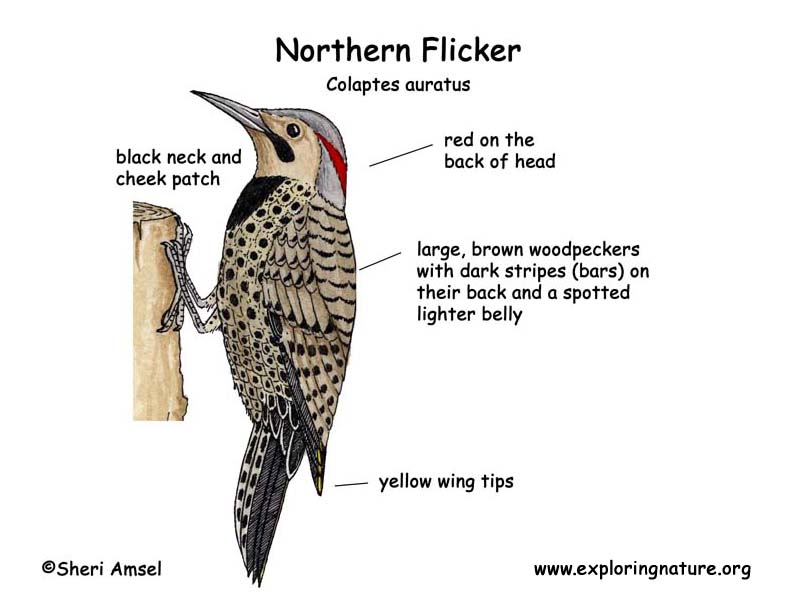

They are found all over the United States.
They live in open areas that have trees.
They are large, brown woodpeckers with dark stripes (bars) on their back and a spotted lighter belly. They have a black neck and cheek patch, red on the back of head, and yellow (in the yellow shafted flicker) or red (in the red shafted flicker) wing tips.
They search on the ground for insects (mostly ants) to eat.
They eat insects (mostly ants) and sometimes eat fruits and seeds.
They nest by digging a hole in a dead tree or stump. It might take both the male and female flicker 1-3 weeks to dig out a nest. They don’t line it with anything except the chipped wood. Females lay 3-12 pinkish-white eggs. Both males and females warm the eggs (incubate) for almost 2 weeks until they hatch.
Domain: Eukarya
Kingdom: Animalia
Phylum: Chordata
Subphylum: Vetebrata
Class: Aves
Order: Piciformes
Family: Picidae
Genus: Colaptes
Species: C. auratus
When you research information you must cite the reference. Citing for websites is different from citing from books, magazines and periodicals. The style of citing shown here is from the MLA Style Citations (Modern Language Association).
When citing a WEBSITE the general format is as follows.
Author Last Name, First Name(s). "Title: Subtitle of Part of Web Page, if appropriate." Title: Subtitle: Section of Page if appropriate. Sponsoring/Publishing Agency, If Given. Additional significant descriptive information. Date of Electronic Publication or other Date, such as Last Updated. Day Month Year of access < URL >.
Amsel, Sheri. "Flicker (Northern)" Exploring Nature Educational Resource ©2005-2024. December 13, 2024
< http://www.exploringnature.org/db/view/189 >

